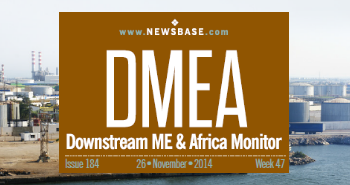Iran's petrol crisis: low quality, high demand

A new leaked document from the Iranian government has indicated that only 20% of the country’s petrol is Euro-4 or Euro-5 compliant, Jahan-e San'at newspaper reported on September 17.
In recent months, Iran has experienced an unprecedented surge in petrol consumption, yet concerns are mounting over the quality of the fuel being distributed in the country, which has seen unhealthy and dangerous air pollution in recent years. The country has also seen a push to install 400 new compressed natural gas (CNG) stations as well as plans to remove obstacles to importing electric vehicles (EVs) into the country in an attempt to wean the general population off petrol cars to offset the worsening environmental conditions.
The leaked document reveals that the government is resorting to blending non-standard materials in its standard regular petrol and high-octane mixes, where prices per litre remain the lowest in the world.
At the same time petrochemical products and ‘aromatics’ have reportedly been blended into petrol mixtures at local refineries to meet demand.
This practice is worrying because these materials can exacerbate air pollution, increasing the mortality rate in cities such as Tehran and Ahvaz. Another side-effect of this are “smog holidays”, which have cost the country’s already sanctioned-battered economy billions in lost revenue.
It is also noteworthy that petrol with low energy density may necessitate increased fuel consumption for covering the same distance.
Iran has grappled with the issue of petrol quality for several years. Earlier this September Afghanistan’s Taliban declined to accept a shipment of Iranian petrol due to its failure to meet their standards.
While the government has pledged its efforts to enhance the quality of locally produced petrol, a clear timeline for any improvements remains elusive.
Consequently, Iranians are driving vehicles fuelled by petrol that not only falls short of international standards but may also pose health and environmental risks.
Reports also suggest that Iran's petrol contains significantly higher levels of sulphur compared to global standards. Petrol with elevated sulphur and other pollutants can contribute to air pollution, potentially leading to respiratory ailments, heart disease and other health issues.
Earlier in September Iran's daily petrol consumption had surged to an all-time high of 137mn litres, said Ali Akbar Nejad Ali, CEO of the National Iranian Oil Products Distribution Company.
He noted that petrol consumption in September this year has risen by approximately 12% compared to the same period last year.



Follow us online